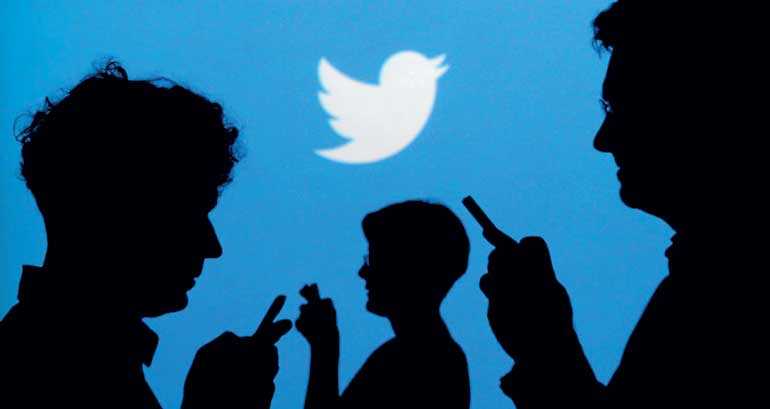Saturday Feb 22, 2025
Saturday Feb 22, 2025
Thursday, 17 May 2018 00:00 - - {{hitsCtrl.values.hits}}

San Francisco (Reuters): Twitter Inc. on Tuesday (15 May) revised its strategy for fighting abusive internet “trolls,” saying it would use behavioural signals to identify harassers on the social network and then limit the visibility of their tweets.
San Francisco-based Twitter, known for freewheeling discussions since it was founded in 2006, has been trying to rid itself of harassment out of concern that personal attacks were driving people away.
Twitter’s rules already prohibit abuse, and it can suspend or block offenders once someone reports them. Users can also mute people they find offensive.
Chief Executive Jack Dorsey said Twitter now would try to find problematic accounts by examining behaviour such as how frequently people tweet about accounts that do not follow them or whether they have confirmed their email address.
Tweets from those accounts will appear lower in certain areas of the service, such as search results or replies to tweets, even if the tweets themselves have not been found to violate any rules.
“We want to take the burden of the work off the people receiving the abuse or the harassment,” Dorsey said in a briefing with reporters. Past efforts to fight abuse “felt like Whack-A-Mole,” he added.
Tweets will not be removed entirely based on behavioural signals, Dorsey said.
In tests the new approach resulted in a 4% decrease in abuse reports originating from search results and an 8% decrease in abuse reports from the conversations that take place as replies to tweets, according to the company.
Most abuse comes from a small number of accounts that have an outsized impact, said Del Harvey, Twitter’s vice president for trust and safety.
Social media firms including Twitter and Facebook are under pressure to remove bullies, many of whom target women and minorities. Many women cannot express themselves freely on Twitter without fear of violence, Amnesty International said in a report in March.
Reducing abuse could also help Twitter’s business. If more people sign up and spend time on the service, marketers may buy more ads on it.
Discover Kapruka, the leading online shopping platform in Sri Lanka, where you can conveniently send Gifts and Flowers to your loved ones for any event including Valentine ’s Day. Explore a wide range of popular Shopping Categories on Kapruka, including Toys, Groceries, Electronics, Birthday Cakes, Fruits, Chocolates, Flower Bouquets, Clothing, Watches, Lingerie, Gift Sets and Jewellery. Also if you’re interested in selling with Kapruka, Partner Central by Kapruka is the best solution to start with. Moreover, through Kapruka Global Shop, you can also enjoy the convenience of purchasing products from renowned platforms like Amazon and eBay and have them delivered to Sri Lanka.
Discover Kapruka, the leading online shopping platform in Sri Lanka, where you can conveniently send Gifts and Flowers to your loved ones for any event including Valentine ’s Day. Explore a wide range of popular Shopping Categories on Kapruka, including Toys, Groceries, Electronics, Birthday Cakes, Fruits, Chocolates, Flower Bouquets, Clothing, Watches, Lingerie, Gift Sets and Jewellery. Also if you’re interested in selling with Kapruka, Partner Central by Kapruka is the best solution to start with. Moreover, through Kapruka Global Shop, you can also enjoy the convenience of purchasing products from renowned platforms like Amazon and eBay and have them delivered to Sri Lanka.